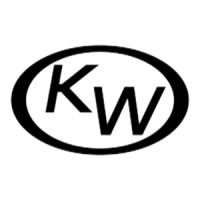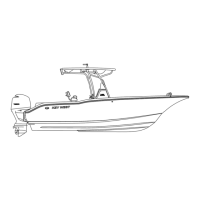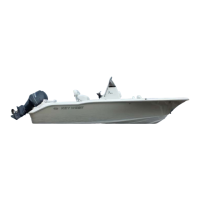
Do you have a question about the Key West Boats boats and is the answer not in the manual?
| Brand | Key West Boats |
|---|---|
| Model | boats |
| Category | Boat |
| Language | English |
Details the legal and safety duties of the boat owner and operator.
Explains the necessity and process for registering your boat with authorities.
Advises on obtaining adequate insurance coverage for your vessel.
Recommends seeking further education for safe and proficient boat operation.
Highlights the importance of regular maintenance for safety and value.
Covers the owner's duty to protect waterways and avoid pollution.
Instructions for informing passengers about boat operation and safety equipment.
Discusses etiquette, respecting other boaters and adhering to water regulations.
Guidelines for protecting the boat from damage during storage.
Stresses the need to record and keep serial, model, and registration numbers safe.
Details the location and significance of the unique Hull Identification Number.
Emphasizes the primary importance of safety for all water activities.
Highlights the need to comply with federal, state, and local boating laws.
Defines the meaning of DANGER, WARNING, and CAUTION symbols used in the manual.
Details the essential safety equipment mandated by the U.S. Coast Guard.
Provides guidance on selecting, wearing, and using PFDs for maximum safety.
Describes and illustrates different types of PFDs (Type I, II, III, IV) and their uses.
Suggests extra equipment to enhance safety and preparedness on the water.
Warns about the severe risks of operating a boat under the influence of impairing substances.
Explains the rules governing boat traffic and right-of-way on waterways.
Provides guidelines for adult supervision and state laws regarding minors and boating.
Offers advice on passenger responsibilities and safe seating while underway.
Details crucial safety measures for individuals participating in water skiing.
Advises on safe practices for swimming and being aware of divers.
Guides on recognizing and reacting to dangerous weather conditions.
Lists common waterway hazards and methods to prevent them.
Provides general guidelines for handling boating accidents.
Explains the various U.S. Coast Guard approved visual distress signal devices.
Outlines the requirements for reporting boating accidents to authorities.
Details how to respond and assist other boaters in distress.
Covers common causes of fires and strategies for handling them.
Offers advice on preparing for and responding to a capsizing event.
Provides crucial safety instructions for towing or being towed.
Details safe practices for refueling your boat, emphasizing fire prevention.
Step-by-step instructions for safely filling the boat's fuel tank.
Explains the importance of adhering to weight and horsepower capacity plates.
Provides methods for safely entering and exiting the boat.
Guides on how to distribute weight for better boat performance and balance.
An overview of fundamental boat operating principles and controls.
Explains the function of the shift/throttle for controlling direction and speed.
Details the critical function and proper use of the engine's safety stop switch.
Explains the steering mechanism and how it affects boat direction.
Covers pre-departure checks and preparation for safe navigation.
Provides tips for effective boat handling in various water conditions.
Guides on safely approaching, docking, and leaving a dock.
Specific instructions and warnings for successful docking maneuvers.
Step-by-step instructions for departing a dock, considering wind and current.
Explains how trim and propeller choice affect boat performance and efficiency.
Details how to adjust engine trim for optimal boat handling and speed.
Information on propeller identification, pitch, and selection for performance.
Provides guidelines for safely anchoring the boat.
Explains the various gauges, switches, and controls on the boat's dashboard.
Details the function of the tachometer for monitoring engine speed.
Explains how to use the speedometer to track boat speed.
How to read and interpret the fuel gauge for accurate fuel level indication.
Details the purpose of the water pressure gauge in monitoring the cooling system.
Explains the use of the trim gauge to monitor the boat's trim.
How the voltmeter indicates the condition of the boat's battery system.
Overview of the boat's 12-volt DC electrical system and battery setup.
Explains the role of fuses in protecting electrical circuits from overloads.
Details the function and operation of various switches on the control panel.
How to operate the switch for navigation and anchor lighting.
Instructions for activating the bilge pump to remove water from the bilge.
Details on operating the aerator to circulate water in the live well.
Explains the use of the accessory switch for optional equipment.
How to use the ignition switch for starting and stopping the engine.
Further emphasis on the critical importance of the safety stop switch.
Additional information on operating the shift and throttle controls.
Information regarding the boat's built-in fuel system and fuel level monitoring.
Details on the bilge, how water enters, and the operation of the bilge pump.
Instructions for mounting and operating the removable navigation lights.
Explains the operation of the live well aeration system for keeping bait fresh.
Information on how to read and utilize the depth gauge.
Details on pedestal fishing seats and safety warnings for their use.
Information on the features and convenience of the Bimini top and curtains.
Guides on cleaning and maintaining the boat's gelcoat finish.
Advice on cleaning and polishing stainless steel fittings for longevity.
Routine inspections and maintenance for the boat's fuel system.
Guidelines for maintaining the bilge and plumbing to prevent hazards.
Instructions for cleaning the live well to ensure it doesn't harm catch.
Ensuring battery security, clean connections, and proper charging.
Checks and maintenance for the boat's hydraulic steering system.
Tips for cleaning and preserving the boat's interior carpet and upholstery.
Proper methods for cleaning the boat's windshield to prevent scratches.
Detailed steps for preparing and storing the boat for the off-season.
Diagnosing and resolving issues when the engine fails to crank.
Troubleshooting steps for an engine that turns over but does not start.
Solutions for engines that are hard to start, including flooded conditions.
Addressing causes of excessive vibration at idle or low speeds.
Diagnosing and fixing issues related to poor engine operation.
Solutions for overall boat performance problems like overloading or trim.
Understanding and correcting the 'porpoising' effect for stable operation.
Tips and adjustments to enhance fuel efficiency.
Troubleshooting issues with throttle controls and gear shifting mechanisms.
Steps to resolve problems with non-working gauges and instruments.
Diagnosing and fixing low or inaccurate tachometer readings.
Troubleshooting why the aerator pump runs but does not move water.
Diagnosing and fixing reasons for the aerator pump failing to operate.
Troubleshooting why the bilge pump runs but does not discharge water.
Diagnosing and fixing reasons for the bilge pump failing to operate.
Steps to resolve problems with the boat's navigation lights.
Addressing issues causing the steering to feel spongy or unresponsive.
Details the owner's obligations for maintaining warranty coverage.
Outlines the dealer's role in providing maintenance and service.
Guidance on how dealers can assist with boating needs and satisfaction.
Explains the Service Manager's responsibility for quality repairs.
Provides contact details for the Key West Boats Customer Service Department.
Lists essential information to have ready when contacting support.
Details the manufacturer's warranty terms for 2010 and later model boats.
Lists items and conditions that are not covered by the manufacturer's warranty.
Covers general terms, governing law, and limitations of the warranty.
Provides definitions for essential boating vocabulary used throughout the manual.









